Ennio Morricone Deborah’s Theme piano solo, sheet music, Noten, partitura, spartiti, 楽譜, 乐谱

Best Sheet Music download from our Library.

Please, subscribe to our Library.
If you are already a subscriber, please, check our NEW SCORES’ page every month for new sheet music. THANK YOU!
The Maestro of Emotion: An Exhaustive Look at the Life and Music of Ennio Morricone
Ennio Morricone was not merely a composer; he was an architect of atmosphere, a painter of sonic landscapes, and a storyteller whose language was music. Over a career spanning more than seven decades and over 400 film scores, he fundamentally reshaped the role of music in cinema. He transformed the sound of the Spaghetti Western, elevated genre films to the level of high art, and created some of the most instantly recognizable and emotionally potent melodies ever committed to celluloid. To speak of Morricone is to speak of a universe of sound, where a lone harmonica could convey a lifetime of vengeance, and a celestial soprano voice could evoke both sacred love and profound sorrow.
Browse in the Library:
Or browse in the categories menus & download the Library Catalog PDF:
Biography: The Roman Prodigy
Ennio Morricone was born on November 10, 1928, in Rome, Italy. Music was his birthright. His father, Mario, was a professional trumpeter, and his mother, Libera, owned a small textile business. The young Ennio was immersed in the practical world of music from the start, and his talent manifested early. He entered the prestigious Santa Cecilia Conservatory at the age of 12, where he received a rigorous classical education.
He initially studied trumpet under Umberto Semproni, graduating in 1946. But his true passion was composition. He continued his studies, earning a diploma in Instrumentation for Band in 1952 and a final diploma in Composition under Goffredo Petrassi in 1954. Petrassi, a renowned composer of modernist classical music, was a profound influence, instilling in Morricone a deep understanding of counterpoint, orchestration, and the avant-garde techniques that would later flavor his film scores.
To support himself and his growing family (he married Maria Travia in 1956), Morricone began working as an arranger in the burgeoning Italian popular music scene. This period was his “conservatory of the real world.” He crafted arrangements for a plethora of RCA Victor artists, most notably for the iconic cantautore (singer-songwriter) Mina and the crooner Paul Anka. This work honed his skills in writing for diverse ensembles, understanding popular melody, and working efficiently under tight deadlines—a crucial asset for a film composer.


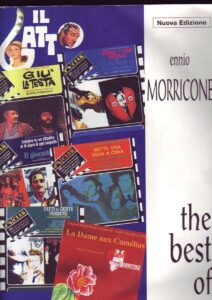
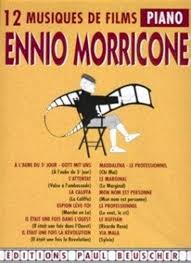



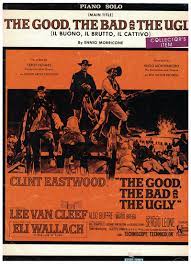

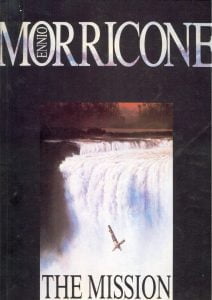
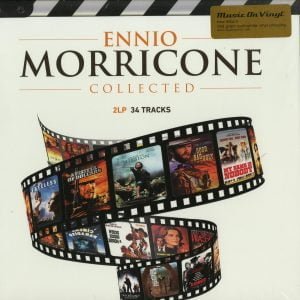

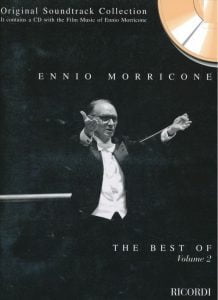

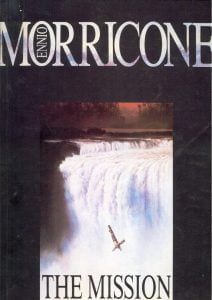
His entry into cinema was gradual. He started by ghostwriting and contributing music to films composed by others. His first official credit as a solo composer came in 1961 with Il Federale (The Fascist). However, his career-defining moment arrived in 1964 with a phone call from a former schoolmate from elementary school, a director named Sergio Leone.
Music Style and Compositional Techniques: Deconstructing the Morricone Sound
Morricone’s style is a unique and revolutionary synthesis of disparate elements. He refused to be bound by the conventions of the Hollywood film score, which often relied on a large, late-Romantic symphony orchestra to simply underscore the action. Instead, he built his scores from the ground up, treating each film as a new laboratory for sound.
1. Eclectic and Unconventional Instrumentation:
This is the most immediate identifier of the “Morricone Sound.” He used instruments not for their traditional roles, but for their unique timbral and emotional qualities.
- The Fistful of Trinity (The Good, the Bad and the Ugly): The score is built on a palette of sounds that were alien to the Western genre: electric guitar, jew’s harp, haunting ocarina, and most famously, the human voice—not in song, but in yodeling, shouts, and chants.
- The Human Voice as an Instrument: Morricone masterfully employed the voice, particularly the soprano of Edda Dell’Orso. Her wordless, soaring vocals in films like The Good, the Bad and the Ugly (“The Ecstasy of Gold”) and Once Upon a Time in the West function as a Greek chorus, representing the untamed spirit of the land, fragile beauty, or transcendent emotion.
- The Harmonica: In Once Upon a Time in the West, the harmonica is not a folksy accessory; it is the sonic embodiment of the protagonist’s (Charles Bronson) trauma and thirst for revenge. Its raw, breathy, and dissonant sound becomes a central character in the narrative.
- The Whistle: The simple, cheerful whistle in For a Few Dollars More is juxtaposed against the grim reality of the bounty hunter’s trade, creating a powerful and ironic contrast.
2. Melodic Genius and Memorable Themes:
Despite his avant-garde tendencies, Morricone was a master of unforgettable melody. Themes like “Gabriel’s Oboe” from The Mission or “Deborah’s Theme” from Once Upon a Time in America are pieces of heartbreaking beauty that can stand alone as concert works. His gift was his ability to distill a film’s core emotion into a simple, potent melodic line.
3. Rhythmic Innovation:
Morricone’s scores are profoundly rhythmic. He often used repetitive, driving patterns to build tension and propel scenes forward. The iconic opening of The Good, the Bad and the Ugly, with its two-note coyote call and relentless, marching rhythm, is a masterclass in creating suspense and a sense of epic scale through rhythm alone.
4. Textural and Atmospheric Composition:
Many of his scores are less about melody and more about creating a dense, immersive atmosphere. The score for The Thing (1982), for John Carpenter, is a masterpiece of ambient dread, using synthesizers, low-register strings, and atonal clusters to evoke paranoia and shape-shifting horror.
Chord Progressions and Music Harmony: A Blend of Tradition and Dissonance
Morricone’s harmonic language was as eclectic as his instrumentation. He seamlessly blended simple, diatonic harmony with striking dissonance and modernist techniques.
- Use of Simple, Powerful Progressions: He was not afraid to use basic triads and strong cadences. The theme from Cinema Paradiso is essentially a beautiful, sentimental waltz built on straightforward chord progressions. This accessibility is key to his music’s emotional directness.
- The Tritone (Diabolus in Musica): Morricone frequently employed the tritone, an interval historically considered dissonant and “evil.” In the main theme for The Good, the Bad and the Ugly, the famous two-note motif (the “coyote call”) is a tritone (A to E-flat). This interval creates an immediate sense of unease, tension, and moral ambiguity, perfectly capturing the film’s anti-heroic world.
- Modal Mixture and Chromaticism: He often borrowed chords from parallel minor or major scales (modal mixture) to add color and unexpected emotional shifts. His music is frequently enriched with chromatic passing tones and harmonies, giving it a sophisticated, slightly bittersweet flavor.
- Cluster Chords and Atonal Effects: Drawing from his studies with Petrassi and the European avant-garde, Morricone would use cluster chords (groups of closely spaced notes played simultaneously) and moments of atonality to depict psychological turmoil, violence, or surrealism. The chaotic gunfight in the final act of Once Upon a Time in the West is underscored not with heroic fanfares, but with a frantic, almost abstract collage of sound.
Cooperation with Other Artists: The Leone Symbiosis and Beyond
While Morricone worked with over 70 of the world’s most renowned directors, a few collaborations stand out as particularly formative.
- Sergio Leone (The Definitive Partnership): The collaboration between Morricone and Leone is one of the most symbiotic in cinema history. They revolutionized the Western genre together. Leone’s operatic, mythic, and visually stylized approach demanded a score that was equally bold and unconventional. Morricone provided not just background music, but an integral narrative voice. Their working method was unique: Morricone would often compose the main themes before filming began, and Leone would play the music on set to inspire the actors and choreograph the scenes to the rhythm of the score. This is why the music feels so intrinsically woven into the fabric of films like The Good, the Bad and the Ugly and Once Upon a Time in the West.
- The “Political” Trilogy with Giuliano Montaldo: For films like Sacco e Vanzetti (1971), Morricone composed some of his most poignant and politically charged music, including the global protest anthem “Here’s to You.”
- The Italian Auteurs: He had long and fruitful collaborations with masters of Italian cinema, including:
- Pier Paolo Pasolini: For Pasolini’s mythic and brutal visions like The Gospel According to St. Matthew (1964) and Salò, or the 120 Days of Sodom (1975), Morricone provided scores that ranged from sacred and folk-like to chillingly dissonant.
- Bernardo Bertolucci: Their work together on 1900 (1976) and The Sheltering Sky (1990) showcased Morricone’s ability to score sprawling historical epics and intimate character dramas with equal skill.
- Dario Argento: For the giallo master, Morricone composed scores that were psychedelic, unsettling, and complex, perfectly matching Argento’s stylized horror in films like The Bird with the Crystal Plumage (1970) and Suspiria (where he was originally considered).
- International Directors:
- Roland Joffé – The Mission (1986): This score is often considered his masterpiece. Morricone seamlessly blends Baroque-inspired sacred music (“Gabriel’s Oboe”) with indigenous South American sounds, creating a profound musical metaphor for the film’s central cultural and spiritual clash.
- Brian De Palma – The Untouchables (1987): Morricone provided a grand, romantic, and Copland-esque score that gave the Prohibition-era drama a mythic, heroic quality.
- Giuseppe Tornatore – Cinema Paradiso (1988): This collaboration produced some of Morricone’s most beloved and sentimental music, perfectly capturing the nostalgia and magic of cinema itself. It began a partnership that lasted until the end of his life.
- Quentin Tarantino – The Hateful Eight (2015): Tarantino, a lifelong Morricone fanatic who had used his existing music in previous films, finally commissioned an original score. Morricone won his only competitive Academy Award for this score, a tense and brooding work that masterfully uses silence and dread.
Influences and Legacy
Influences: Morricone’s influences were vast. They included the polyphonic complexity of J.S. Bach, the expansive orchestrations of Gustav Mahler, the Italian melodic tradition of opera, the experimentalism of the post-war avant-garde (e.g., Pierre Boulez, John Cage), and the rhythms and harmonies of American jazz and bossa nova.
Legacy: Ennio Morricone’s legacy is immeasurable.
- He Elevated Film Music: He proved that a film score could be a sophisticated, independent work of art that actively participates in the storytelling, rather than simply reinforcing it.
- He Inspired Generations: Virtually every major film composer working today, from Hans Zimmer and John Williams to Michael Giacchino, cites his influence. His techniques of textural composition and unconventional instrumentation have been absorbed into the mainstream language of film scoring.
- Cross-Genre Appeal: His music has been covered, sampled, and referenced by countless pop, rock, and electronic artists, from Metro Booming and Jay-Z to Muse and Radiohead, testifying to its timeless and universal power.
- The Concert Hall: In his later years, Morricone embarked on massive international concert tours, performing his film music to sold-out arenas, a testament to its power to stand alone, independent of the images it was written for.
Major Works, Filmography, and Most Known Compositions
While his filmography is immense, certain works stand as towering monuments in his career.
The “Dollars Trilogy” with Sergio Leone:
- A Fistful of Dollars (1964)
- For a Few Dollars More (1965)
- The Good, the Bad and the Ugly (1966)
- Key Tracks: “The Good, the Bad and the Ugly (Main Title)”, “The Ecstasy of Gold”, “The Trio”.
Other Landmark Leone Collaborations:
- Once Upon a Time in the West (1968) – Often called the greatest film score ever written.
- Key Tracks: “Once Upon a Time in the West”, “The Man With a Harmonica”, “Jill’s America”.
- Once Upon a Time in America (1984)
- Key Tracks: “Deborah’s Theme”, “Once Upon a Time in America”, “Cockeye’s Song”.
Other Essential Scores:
- The Battle of Algiers (1966) – Gillo Pontecorvo
- The Great Silence (1968) – Sergio Corbucci – A bleak, tragic Western score.
- Investigation of a Citizen Above Suspicion (1970) – Elio Petri – A modernist, psychologically probing score.
- Sacco e Vanzetti (1971) – Giuliano Montaldo
- Key Track: “Here’s to You” (lyrics by Joan Baez).
- The Mission (1986) – Roland Joffé
- Key Tracks: “Gabriel’s Oboe”, “On Earth as It Is in Heaven”, “The Falls”.
- The Untouchables (1987) – Brian De Palma
- Key Track: “The Untouchables (Main Title)”.
- Cinema Paradiso (1988) – Giuseppe Tornatore
- Key Tracks: “Cinema Paradiso (Main Theme)”, “Love Theme”, “Projection For Two”.
- The Hateful Eight (2015) – Quentin Tarantino
- Key Tracks: “L’Ultima Diligenza di Red Rock”, “Neve”.
Discography
Morricone’s discography is as vast as his filmography, with hundreds of official soundtrack releases. Key collections and non-soundtrack works include:
- The Morricone Suite (Various compilations)
- A Fistful of Film Music (Compilation)
- The Mission: Original Soundtrack
- Crime and Dissonance (A compilation focused on his more experimental giallo and thriller scores)
- Morricone Segreto (A collection of rare and previously unreleased tracks from his private archives)
- He also composed a significant body of “Absolute Music” (concert music) throughout his life, including works like The Sicilian Clan and Ut, which share the same harmonic and textural language as his film work.
Ennio Morricone passed away on July 6, 2020, in Rome, at the age of 91. He left behind a universe of sound—a legacy that continues to resonate in concert halls, in cinemas, and in the hearts of millions. He was the maestro who taught the world that a film score could whisper, shout, weep, and ultimately, tell a story all its own.
